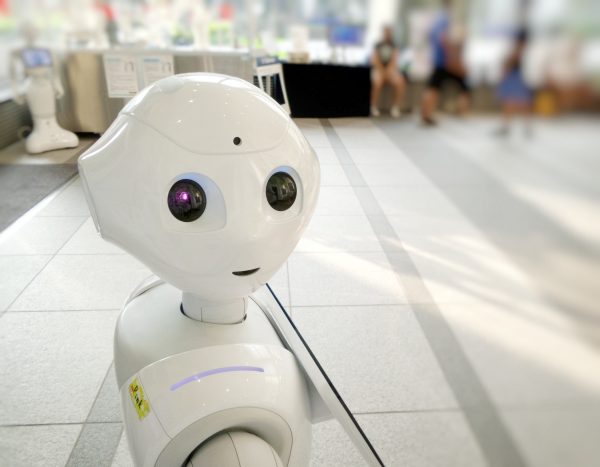To help us stay on our toes when it comes to strategic technological trends, a group of analysts from Gartner has looked at what will be the most important trends in the coming year.
This year’s trends are structured around the idea «people-centric smart spaces», which is about assessing how technologies will affect people (customers and employees) and the places they move (home, office, car).
“These trends have a huge impact on the people and the environment in which they live. Instead of building technology and then exploring potential applications, organisations need to consider the business and human context first,” says Brian Burke, Gartner Research VP, on their website.
A combination of the trends will give the best results, and IT managers should, therefore, decide on what combination will drive the most innovation and strategy for their business.
Here are the biggest trends for 2020:
1) Hyper automation
Automation uses technology to automate tasks that once required people to do those tasks. Hyper-automation is about using technologies like artificial intelligence (AI) and machine learning, to further automate processes. The goal of hyper-automation is, therefore, to automate everything that can be automated.
Because not one tool alone can replace humans, hyper-automation today involves a combination of tools, such as Robot Process Automation (RPA), Intelligent Business Management Software (iBPMS), and AI, with the goal of more AI-driven decision making.
Also read: How can AI simplify kindergarten admission?
2) Multiexperiences
Multiexperience focuses on how people interact with, experience and control the digital world of applications.
“Multiexperience replaces technology-literate people with people-literate technology. In this trend, the traditional idea of a computer evolves from a single point of interaction to include multisensory and multi-touchpoint interfaces like wearables and advanced computer sensors,” explains the author of the Gartner article.
Take Domino’s Pizza for example: They have invested in a multiexperience platform. It surpasses having only one application to order pizza as such a platform also includes applications that go out to a smart speaker, a pizza tracking application, pizza delivery drones and many other components that focus on a multiexperience for their customers. In other words, you get a holistic experience through several applications.
In the future, this trend will be what is called an “ambient experience”, but for the time being, multi-sensory experiences are focused on engaging experiences using augmented reality (AR), virtual reality (VR) and multichannel interfaces between humans and sensors.
The combination of these technologies can be used for a single AR layer or a full VR experience.
3) Democratisation
Democratising technology means giving people easy access to technical or business expertise without extensive (and costly) training. There are four major focus areas in democratisation: Application development, data and analysis, design and knowledge.
For example, democratisation will allow developers to generate data models without having a computer scientist. Instead, they will rely on AI-driven development to generate code and automate testing.
All individuals will also be able to access module-based “programming tools” to create their own solutions based on partially or fully finished program parts that can be assembled by an unskilled professional.
Also read: AV1: A robot specifically developed for the classroom and school life.
4) Human augmentation
Human augmentation is about using technology to enhance a person’s cognitive and physical experiences and abilities through the use of AI and machine learning. Cognitive augmentation improves a person’s ability to think and make better decisions, for example by leveraging information and applications to improve learning or new experiences.
Human augmentation is connected to other trends for 2020 as well:
Multi-sensing drives better interfaces and hyperautomation automates more and more activities. All these things contribute to a new and extended human experience.

5) Transparency and traceability
The developments in technology are creating a crisis of confidence. Consumers have become more aware of how their data is collected and used, which is why businesses are also recognising the increasing responsibility for storing and collecting data.
This trend requires businesses to focus on six key elements to build trust: Ethics, integrity, transparency, accountability, competence, and consistency. Businesses must become transparent about how they use data and making sure traceability is possible.
Also read: Better nursing care with time window expansions.
6) Enhanced edge computing
“Edge computing” is a computing topology where information processing and content collection and delivery take place closer to the source and consumer of this information. Keeping the traffic local and distributed, the idea is to reduce latency, expand capabilities and improve decision-making.
“The edge” refers to all technology built into IoT in the world around us. “The empowered edge” looks at how these devices increase and form the basis for smart spaces, moving important applications and services closer to the people and devices that use them.
By 2023, there may be more than 20 times as many smart devices on the outskirts of the network as in conventional IT roles.
7) The distributed cloud
The distributed cloud refers to the distribution of public cloud services to locations outside the cloud provider’s physical data centers, but which are still controlled by the provider. In a distributed cloud, the cloud provider is responsible for all aspects of cloud service architecture, delivery, operation, governance, and updates.
The evolution from centralised public cloud to distributed public cloud centers is a new era of cloud computing.
The distributed cloud allows data centers to be located anywhere – but still be interconnected. This solves both technical problems such as latency and also regulatory challenges such as data sovereignty.
Also read: Interview: Working with projects that has an impact on the society.
8) Autonomous things
Autonomous things utilise AI to perform tasks that are usually performed by humans. Thus, one looks at how AI and machine learning enable autonomous activities on physical things, such as drones, robots, cars, and ships.
This technology operates on a spectrum of intelligence ranging from semi-autonomous to fully autonomous, and across a variety of environments.
Although autonomous things today mainly exist in controlled environments, they will eventually evolve into open public spaces. However, this technology cannot currently replace the human brain and it operates most effectively with a narrowly defined and well-scoped purpose.
9) Practical blockchain
First: Blockchain is a type of distributed ledger, an expanding chronologically ordered list of cryptographically signed, irrevocable transaction records shared by all participants in a network.
Since it was first introduced in 2009, several alternative blockchains have emerged as technological experiments. According to Gartner, some of the blockchains we see in experiments or small projects today could be fully scaled by 2023.
10) AI security
Technologies such as hyperautomation and autonomous things contribute to great opportunities in business, but it also creates security challenges through new potential points of attack. Security teams must address these challenges and be aware of how AI will impact the security space.
According to Gartner, AI security has three main perspectives:
- Protection of AI-powered systems: Securing AI training data and ML models
- Utilising AI to Enhance Security Defense: Using Machine Learning to Understand Patterns, Detect Attacks, and Automate Parts of Security Processes
- To predict the attacker’s nefarious use of AI: Identify attacks and defend against them
Want to learn more about technology? Visit our category page ‘technology’ here.




